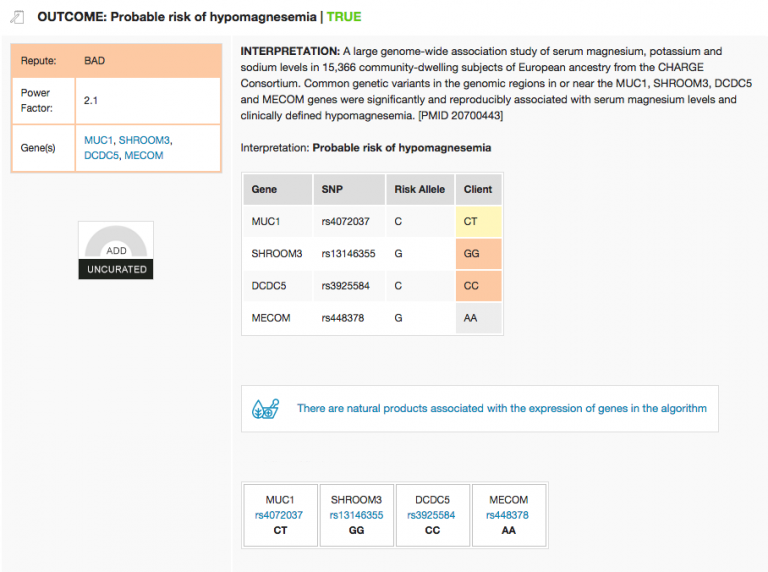Algorithms are perhaps the most significant and flexible aspect of Opus 23 data. They are usually the easiest result for the non-medical person to understand, because their conclusions are usually simplified statements in everyday language. Algorithms are processed by the LUMEN app in Opus 23 Pro.
LUMEN is one of the most powerful apps in the Opus 23 Pro toolbox. This app allows you to examine the effects of multi-SNP, multi-gene consequences. Very few single SNPs exert their effects independently; they more typically interact through epistatic relationships (where the phenotypic expression of one gene influences the genotypic expression of another) or as a haplotype: a set of several SNPs, on a single chromatid of a chromosome pair that are associated statistically.
LUMEN does this by using algorithms, small step by step programs that run inside of LUMEN and that look at the logical result of multi-SNP combinations. This type of logic is essentially ‘Boolean’ in that its queries yield a yes or no answer. The combination of both allows LUMEN to provide you with insight into complex SNP arrangements and relationships that might otherwise escape detection.
It’s helpful to think of an Opus 23 algorithm as a tiny flowchart, that depending on which way the result branches, generates a ‘true or false’ result.
For example, a simple algorithm to determine if you should get out of bed might be:
- If you hear the alarm clock, open your eyes.
- If it’s dark outside, go back to bed.
- If it’s light outside, check the time.
- If it’s earlier than 7AM, go back to bed.
- If it’s later than 7AM, get up, check calendar
- If it’s Saturday, go back to bed.
As can be seen, there are a lot of ways you can go back to bed with this algorithm! And this is also true as well for the Opus 23 Pro algorithms: In order for an algorithm to be true, it must fufill all of several conditions. If even one condition fails, the whole algorithm will be false.
Each algorithm is displayed in its own box, and contain information about the genes and SNPs used in its creation. The title of the algorithm is generally its conclusion. Typically, the client report contains only true algorithms, although you may choose to include false algorithms as well, especially if it would be helpful to make the client aware of something they’re likely to not be prone to. Thus:
- An algorithm that returns a true will have a ‘check’ icon in the bottom left-hand box. The conclusions of these algorithms pertain to to the client based on their genomic data results.
- An algorithm that returns a false will have a ‘cross’ icon in the bottom left-hand box. The conclusions of these algorithms do not pertain to the client based on their genomic data, other than perhaps the added knowledge that this is one less thing in life to worry about.

